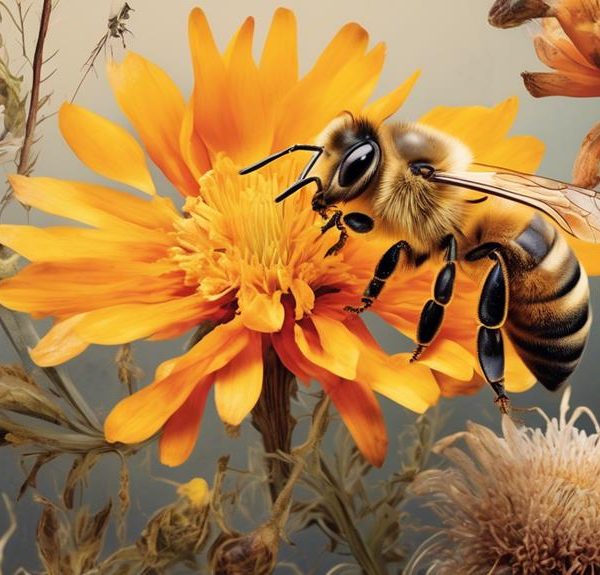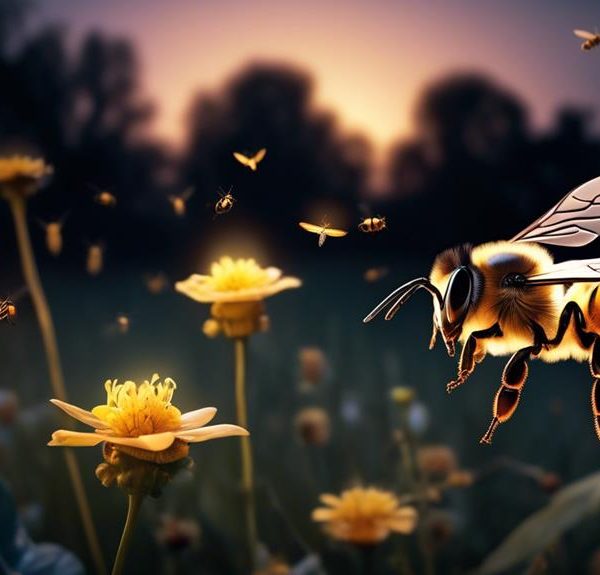Buzz into the intriguing world of honey bees and discover why these vital pollinators are classified as arthropods.
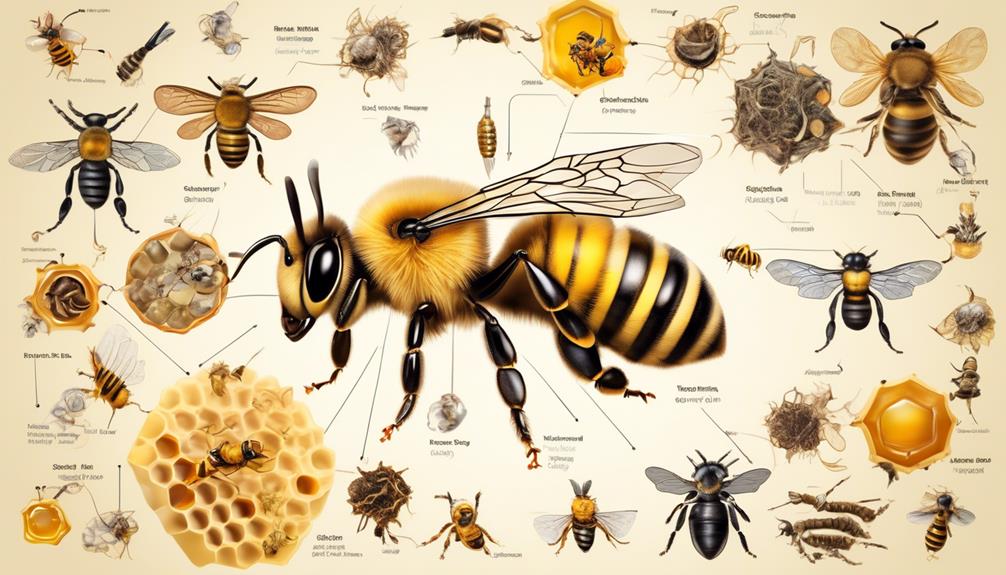
Are Honey Bees Arthropods
You've seen them buzzing around flowers, you've tasted the sweet nectar they produce, but have you ever pondered whether honey bees are arthropods?
Simplistically, arthropods are invertebrates that possess an exoskeleton, a segmented body, and jointed appendages. This description might immediately make you think of creatures like spiders or crabs, but where exactly does the humble honey bee fit into this category?
This is a question worth exploring, not just for the sake of knowledge, but because understanding the classification of honey bees can shed light on their behaviors, their impact on ecosystems, and ultimately, their crucial role in our survival.
Key Takeaways
- Honey bees are classified as insects within the phylum Arthropoda.
- Honey bees have exoskeletons and segmented bodies like other arthropods.
- Honey bees exhibit jointed appendages and bilateral symmetry typical of arthropods.
- The genus Apis, to which honey bees belong, is known for honey production and colonial nesting behavior.
Understanding Arthropods: A Brief Overview
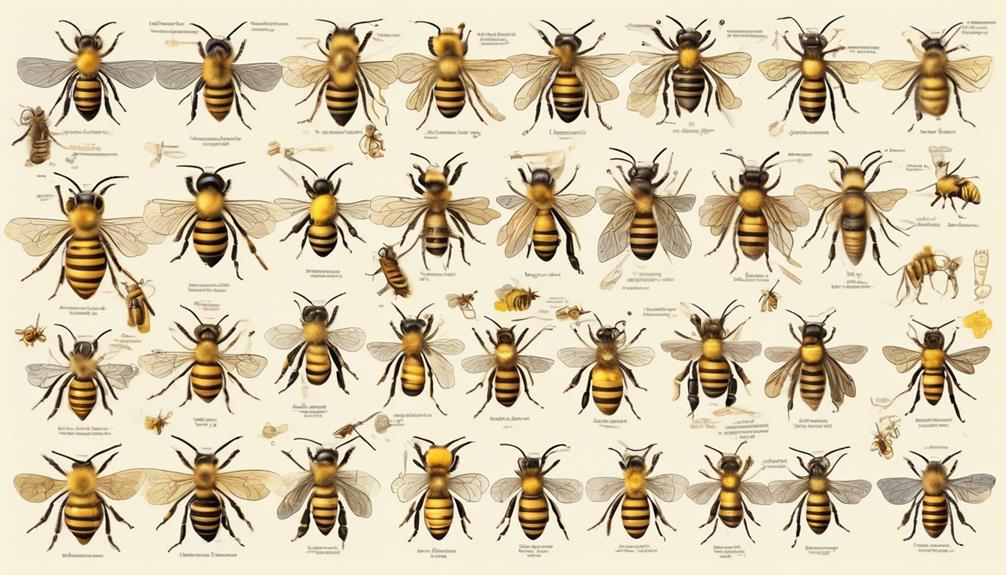
Before diving into the world of honey bees, it's crucial for you to grasp the basics of arthropods, the largest phylum in the animal kingdom. Arthropods are invertebrates, meaning they lack a vertebral column. But don't let this mislead you into thinking they're fragile. Instead, they possess an exoskeleton, a hard outer shell that provides both protection and support.
In the intricate world of arthropods, you'll find a diverse set of species. This phylum includes insects, spiders, crustaceans, and more. Each member is characterized by jointed appendages, segmented bodies, and bilateral symmetry. That's right; if you were to slice a typical arthropod down the middle, you'd find near mirror images on either side.
Now, it's time to talk about metamorphosis, an essential process in the arthropod world. Most undergo a complete transformation, changing from a juvenile to an adult form. This process, often dramatic, allows for specialization in different life stages.
Understanding arthropods is the first step in your journey to learning about honey bees. After all, these industrious insects are arthropods themselves, sharing the same basic characteristics with their fellow phylum members.
Physical Characteristics of Honey Bees
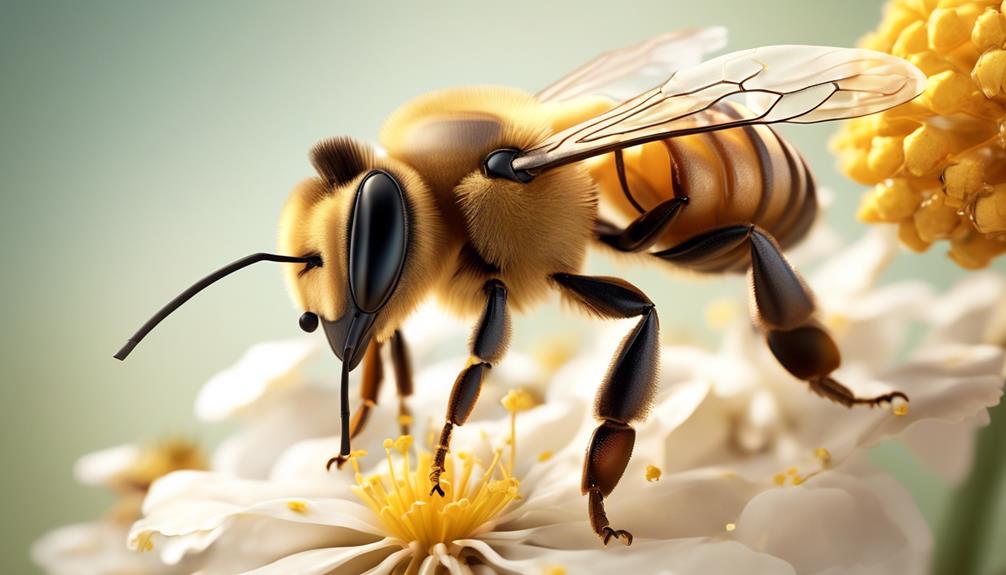
Delving into the physical traits of honey bees, you'll observe the exoskeleton, segmented bodies, and jointed appendages that mark them as true arthropods. These features are hallmarks of this group of invertebrates. Honey bees exhibit a division of their bodies into three distinct parts: the head, the thorax, and the abdomen. Each body segment serves a particular function vital to the bee's survival.
Let's examine these characteristics in the following table:
Body Part | Description | Function |
|---|---|---|
Exoskeleton | Hard, protective outer layer | Provides support and protection |
Segmented Body | Divided into head, thorax, and abdomen | Facilitates movement and function specialization |
Jointed Appendages | Legs, antennae, and mouthparts | Enables locomotion, sensing environment, and feeding |
Underneath their exoskeleton, honey bees possess a network of muscles that enable them to perform feats such as flying and carrying loads much heavier than themselves. Their jointed appendages not only function for locomotion, but also play essential roles in communication, collection of pollen and nectar, and manipulation of the environment.
Honey Bee Behavior and Habitat
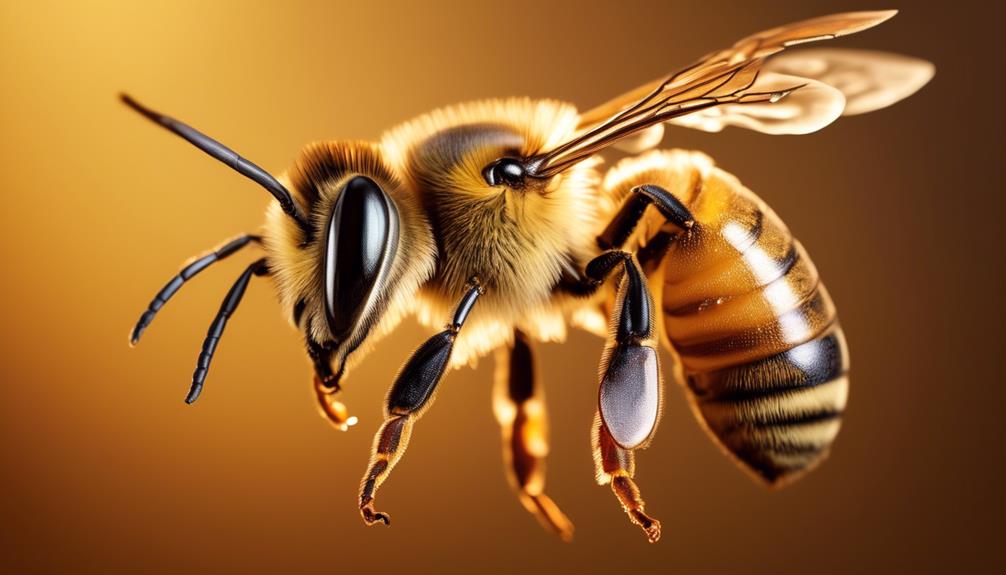
Now, let's turn our focus to the behavior and habitat of honey bees, which are as fascinating and diverse as their physical characteristics. Honey bees are social insects that live in colonies. Each colony consists of a queen, drones, and worker bees, each with its own role. The queen's sole function is to reproduce, drones mate with the queen, and workers, who are all females, perform all other tasks within the colony.
Honey bees are highly industrious. They forage for nectar and pollen, which they use to produce honey and feed the colony. Their remarkable navigation skills allow them to locate food sources miles away and return to their hives accurately.
Honey bees thrive in various habitats, from forests to deserts. However, they're typically found near flowering plants, their primary food source. They build their nests in tree cavities or rock crevices, forming a series of wax combs for storing honey and housing their young. A suitable nest site is crucial for the colony's survival and growth.
Understanding bees' behavior and habitat is vital as it informs bee conservation efforts, especially crucial given the current bee population decline.
Classification of Honey Bees in Arthropoda
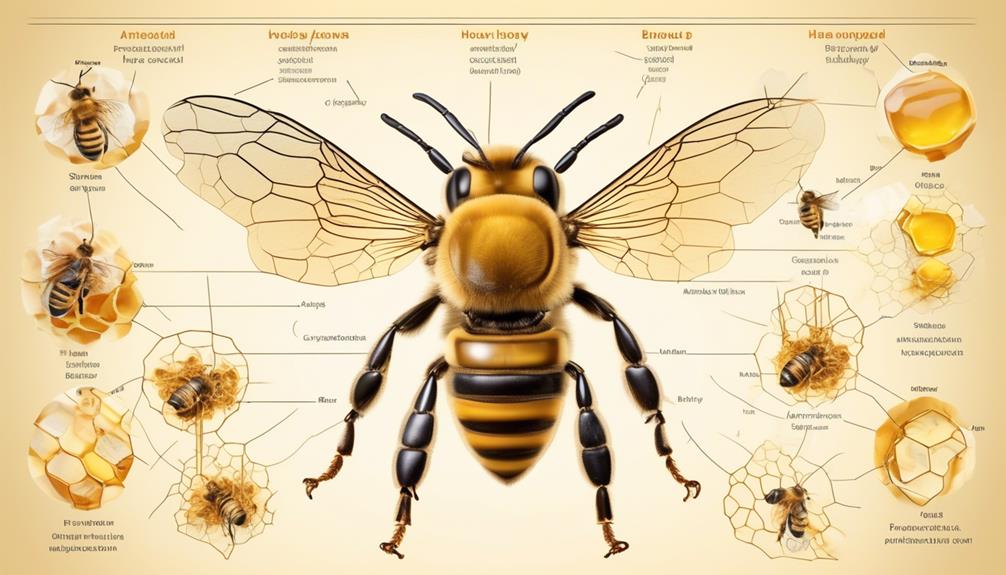
Let's dive into the scientific realm of classification, specifically focusing on why honey bees fall under the large umbrella of arthropods. Arthropods, as you may know, are a broad category of organisms that share certain anatomical features: segmented bodies, exoskeletons, and jointed appendages. This group includes insects, spiders, crustaceans, and more.
Your honey bee, scientifically known as Apis mellifera, is an insect, which is a specific class within the arthropod phylum. Insects are distinct from other arthropods due to their three-part body structure, compound eyes, and antennae. The honey bee meets these criteria, solidifying its place in the insect class.
But let's narrow it down further. Within insects, honey bees belong to the order Hymenoptera, known for its members' shared trait of a 'membranous' pair of wings. Additionally, they fall into the family Apidae, which includes bees and a few kinds of wasps. Finally, their genus, Apis, is characterized by the production of honey and the construction of perennial, colonial nests.
Impact of Honey Bees on Ecosystems
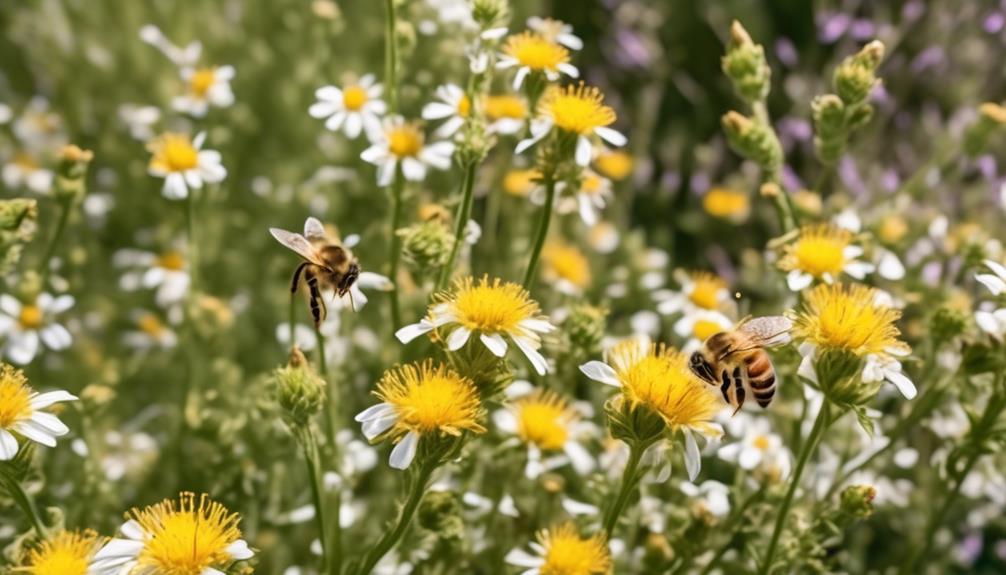
Having established the honey bee's place in the vast arthropod phylum, it's important to turn our attention to the significant role they play in our ecosystems. Honey bees, as pollinators, are crucial for the maintenance of biodiversity. They facilitate the reproduction of flowering plants, which in turn provide shelter and food for myriad species.
You see, when a honey bee visits a flower, it collects pollen on its body. As it moves to the next flower, some of that pollen rubs off, allowing fertilization to occur. This process is essential for the survival of the plant species. Without it, we'd see a notable decrease in plant diversity and abundance.
But it's not just about the plants. The ripple effect would touch every level of our ecosystems. Less plant diversity could mean fewer food resources for herbivorous animals, which in turn could affect the predators that rely on them for sustenance.
Moreover, honey bees themselves are a food source for various insectivorous species. Their decline could potentially disrupt the entire food chain.
Conclusion
In essence, honey bees are indeed arthropods, possessing the unique physical characteristics and behaviors of this group, like a hard exoskeleton and jointed limbs. They play a crucial role in ecosystems, especially in pollination.
Understanding their classification in Arthropoda not only enhances our knowledge of honey bees but also allows for better conservation strategies.
So, next time you see a honey bee, remember – you're witnessing a small, yet vital part of our diverse world.

